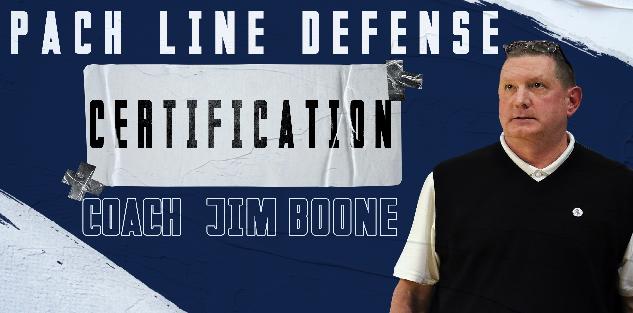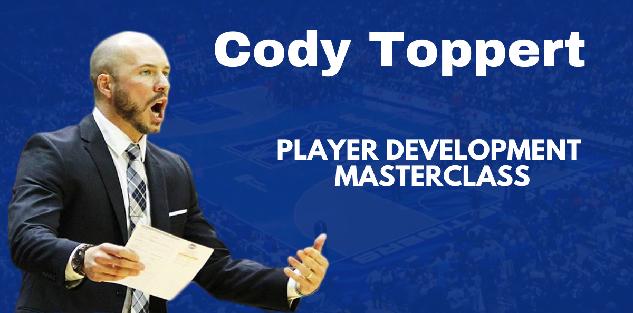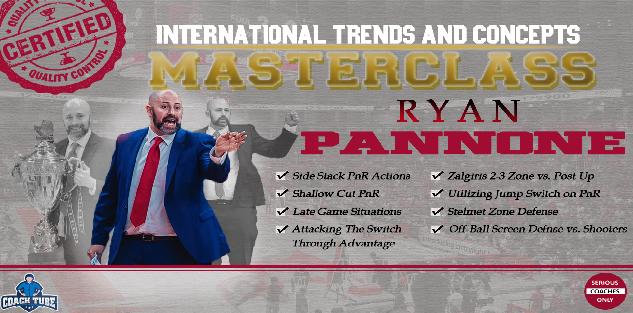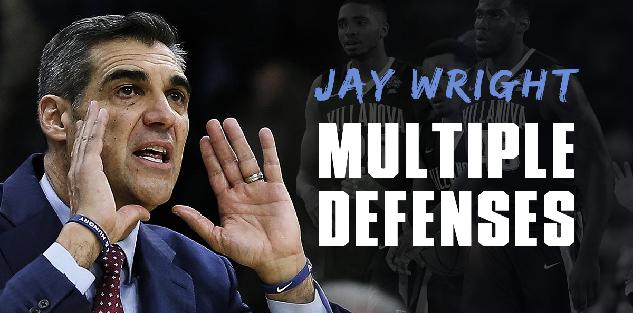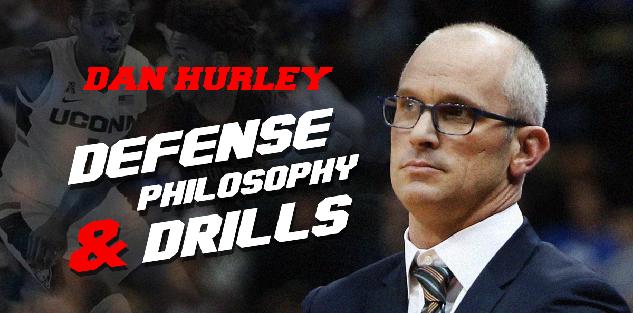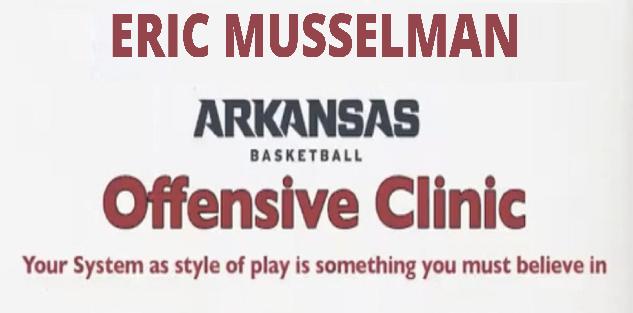Featured courses
- Two Great Game Situational Workouts For the Basketball Offseason by Grant Young
- Two Reads Basketball Players Must Understand Before Executing the Ball-Screen by Grant Young
- Two of LSU Coach Kim Mulkey’s Game-Winning Inbounds Plays by Grant Young
- Three Effective Early-Season Defensive Basketball Drills by Grant Young
- Four Essential Tips For Basketball’s 1-3-1 Zone Defense by Grant Young
- Four Zone Defense Drills to Strengthen Your Team by Grant Young
- How to Beat the Three Most Common Pick and Roll Coverages by Grant Young
- Two Drills to Improve Shooting at the Start of the Basketball Season by Grant Young
- Core Basketball Principles That Dallas Mavericks Coach Sean Sweeney Teaches by Grant Young
- Three Competitive Shooting Drills For Your Basketball Team by Grant Young
- How To Teach The ‘I’ Generation of Basketball Players by Grant Young
- Three Elite Drills to Begin a Basketball Practice With by Grant Young
- How to Build a Championship-Winning Basketball Team Culture by Grant Young
- Two of Texas Women’s Basketball Coach Vic Schaefer’s Tips For Team Culture by Grant Young
- Atlanta Dream WNBA Coach Brandi Poole’s Four Sets for Secondary Offense by Grant Young
- NC State Basketball Coach Brett Nelson’s 4 Crucial Point Guard Qualities by Grant Young
- Kentucky Coach Mark Pope’s Five Guard Rules For Offense by Grant Young
- McNeese State Basketball Coach Will Wade’s 4 Core Pillars by Grant Young
- 4 Tips To Instantly Improve Your Free Throw Shooting by Tyler Linderman
- Assemble a Championship-Caliber Basketball Rotation by Brandon Ogle
- Two of UConn Coach Dan Hurley’s Key Defensive Drills by Grant Young
- Four Post Moves All Basketball Forwards Should Have In Their Bag by Grant Young
- Four of Baylor Coach Nicki Collen’s Midseason Pick and Roll Adjustments by Grant Young
- WNBA Legend Sue Bird’s Two Tips For Attacking on Offense by Grant Young
- Houston Coach Kelvin Sampson’s Three Keys for Building a Basketball Program by Grant Young
- Two of Tom Izzo’s Top Michigan State Defensive Drills by Grant Young
- Four of Olympic Gold Medalist Coach Mechelle Freeman’s Relay Race Strategies by Grant Young
- Three Key Strategies Will Wade Uses to Build a Dominant Team by William Markey
- Five UConn Huskies Men’s Basketball Plays That You Can Use by Grant Young
- Three Tips for Maintaining Team Culture at the End of a Basketball Season by Grant Young
- Three Dribble Drive Motion Drills to Teach Your Basketball Team by Grant Young
- Three Dribbling Drills For Non-Primary Ball Handlers by Grant Young
- Four Advanced Ball Handling Drills For Basketball Guards by Grant Young
- Three Tips to Sharpen Your Post Player’s Footwork in Basketball by Grant Young
- These Three Pick and Roll Drills Are Crucial For Any Ball Screen Offense by Grant Young
- Three Closeout Drills to Improve Basketball Shooting Defense by Grant Young
- Three Tips to Perfect the Packline Defense in Basketball by Grant Young
- Four Keys to Executing the Read and React Offense in Basketball by Grant Young
- Three Tips to Develop Elite Basketball Shooters by Grant Young
- Three Crucial Keys to Executing the 5 Out Offense in Basketball by Grant Young
- These Three Offensive Sets Will Help You Beat Any Zone Defense by Grant Young
- Three Transition Basketball Drills To Play With More Pace by Grant Young
- Three 5 Out Offense Drills Any Basketball Coach Can Use by Grant Young
- Four Vital Techniques for a Motion Offense in Basketball by Grant Young
- Three Baseline Inbounds Plays To Win Your Basketball Team Games by Grant Young
- Four Drills For Sharpening the European Ball Screen Offense by Grant Young
- Three Positioning Tricks For a Basketball Zone Offense by Grant Young
- Three Rules to Perfecting Basketball's Lock Left Defensive System by Grant Young
- UCLA WBB Coach Cori Close’s Two Keys to Winning the Mental Game by Grant Young
- Four of Alabama Coach Nate Oats’ Favorite Basketball Drills by Grant Young
- Three Ways To Turn Transition Offense in Basketball Into Points by Grant Young
- Three Drills to Master Basketball's Pack Line Defense by Grant Young
- Three Transition Defense Drills to Halt Fast Breaks by Grant Young
- Four Offensive Rebounding Drills to Win Second Possessions by Grant Young
- 4 Defensive Technique Drills from Boston Celtics Assistant Coach Brandon Bailey by Marek Hulva
- 5 Drills to Improve Ball Handling by Tyler Linderman
- 13 FUNNY BASKETBALL GIFS by Alex
- BASKETBALL SPEED AND AGILITY: 8 QUESTIONS FOR COACHTUBE EXPERT RICH STONER by Jaycob Ammerman
- Defensive Strategies for Basketball by Ryan Brennan
- 4 Keys To Turning Your Program Into Championship Contender By Dallas Mavericks Coach Sean Sweeney by Marek Hulva
- 5 Components to Creating a Winning Basketball Program by Justin Tran
- Guide to Becoming a Lethal Scorer in Basketball by Justin Tran
- Zone Defense In the NBA Eastern Conference Finals by James Locke
- Mastering Court Mobility: Tips for Effective Movement in Basketball by Justin Tran
- 5 Basketball Shooting Drills: How to Develop a Sharpshooter by James Locke
- 6 Points of Emphasis for a Successful 5 Out Offense by Jaycob Ammerman
- Effective and Efficient Methods to Practice During the Basketball Season by Justin Tran
- Three Great Passing Drills From a Basketball Coaching Legend by Grant Young
- 7 Principles For Perfecting the Princeton Offense in Basketball by Grant Young
- How to Replicate A Modern NBA Offense by Grant Young
- Three Great Two-Ball Dribbling Drills For Basketball Development by Grant Young
- Two Rebounding Drills to Win Your Basketball Team Championships by Grant Young
- How to Improve Your Basketball Team’s Defense With the Shell Drill by Grant Young
- How Baylor Basketball’s Scott Drew Develops Elite Guard Play by Grant Young
- Off-Ball Movement Tips and Strategies: Lessons From the NBA Finals by James Locke
- Player Development: Scott Drew’s Tips for Producing NBA Guards by James Locke
- How to Execute a Spread Offense in Basketball by Grant Young
- Four Quality Quotes From Four Final Four Coaches by Grant Young
- A Guide to the Pack Line Defense by Alex Martinez
- 3 Defensive Build Up Drills to Improve Team Basketball Defense by Grant Young
- Battle of Two Great Coaches: Best Plays from the NBA Finals Contenders by Justin Tran
- 10 Creative Ways Athletic Programs Can Use a Video Board to Raise Money by Coach Williams
- How to Use 3 on 3 to Improve Your Basketball Team by Grant Young
- How to Defend the Pick and Roll by Grant Young
- Mastering Basketball Defense: Techniques, Drills, and Strategies for Success by Justin Tran
- Three Tips From The Coach Who Developed Giannis Antetokoumnpo by Grant Young
- 2023 NBA Draft: Skills and Technique from Top Prospects by Justin Tran
- From College to the Pros: Transitioning the Dribble Drive Offense by Justin Tran
- Positionless Basketball: Redefining Roles on the Court by Justin Tran
- Revolutionize Your Offense: Proven Concepts to Elevate Your Basketball Game by Justin Tran
- 5 Essential Fastbreak Drills Every Basketball Coach Should Know by James Locke
- How to Run a Circle Offense in Basketball by Grant Young
- Game-Changing Strategies: ATO Plays in the EuroLeague and Olympics by Justin Tran
- How to Stand Out at Basketball Tryouts by Grant Young
- How to Improve Your Basketball Team’s Transition Defense by Grant Young
- Indiana Fever GM Lin Dunn’s Two Keys For Women’s Basketball Coaches by Grant Young
- Strength Training Strategies Every Basketball Player Should Have by Grant Young
- A WNBA Basketball Coach’s Four Priorities In Transition Defense by Grant Young
- Three Adjustments to Make When Your Basketball Offense Isn’t Working by Grant Young
- Three Pillars to Applying Defensive Pressure on the Basketball Court by Grant Young
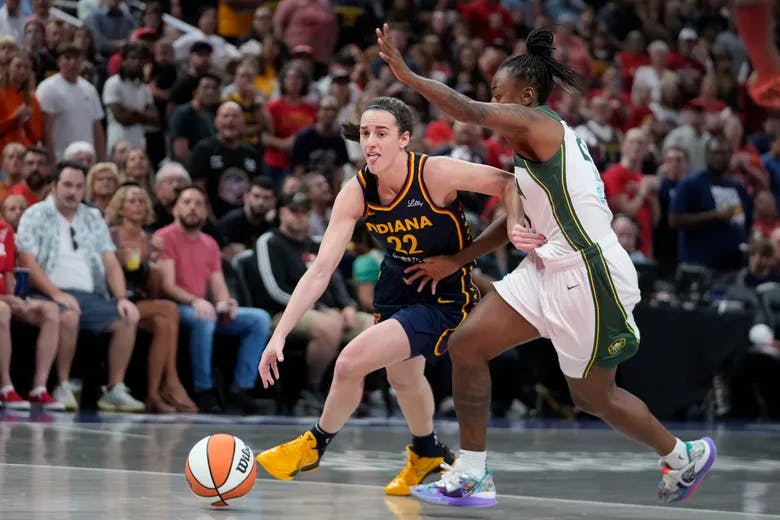
Three Transition Basketball Drills To Play With More Pace
- By Grant Young
Transition basketball is a crucial aspect of the game that emphasizes the importance of quick movement and decision-making. Here are some key points showcasing its significance:
Speed and Tempo: Transition basketball allows teams to take advantage of fast breaks, enabling them to score quickly before the opposing defense can set up.
Creating Mismatches: When a team effectively pushes the ball up the court, it can exploit mismatches. Faster players can outrun slower defenders, increasing the likelihood of easy baskets.
Defensive Adjustment: Transition plays force the opposing team to react quickly, often leading to defensive lapses.
Utilizing Athleticism: Teams with athletic players often thrive in transition. Players who can run the floor, handle the ball, and finish at the rim make transition basketball a potent weapon.
Momentum Shift: Quick scoring in transition can shift the momentum of a game. A series of fast-break points can energize a team, boost morale, and put pressure on the opponent.
Ball Movement: Transition basketball encourages ball movement and teamwork. Players must quickly pass, cut, and create space, improving overall offensive efficiency.
Defensive Transition: Equally important is the ability to transition effectively to defense after a turnover or missed shot.
Game Strategy: Incorporating transition basketball into a team’s strategy can lead to a more dynamic and unpredictable style of play.
Teams that excel in this area often find greater success on the court. If you want your team to improve their efficiency and effectiveness on the fast break, the following three drills we’ve pulled from three top-tier coaches will help your pursuit to do so.
John Leonzo - Colors Drill
John Leonzo enters his third season as an assistant coach for the Wright State women's basketball program. He was promoted to associate head coach in 2022.
Leonzo joined the Raiders in June 2021 after five seasons as an assistant coach at Cedarville University. He was involved in all facets of the Yellow Jacket program, including recruiting, player development, and scouting.
Coach Leonzo’s ‘The Ultimate Guide To Transition Offense’ course details his Colors Drill, which he believes all fast-paced offenses should employ during practice.
This drill begins with one team of five players lined up along the baseline with a ball and the other team starting about five feet in front of them on the court, across from the player they’ll be defending.
From there, the coach will call the name of a player on the defending team. This kickstarts the offensive team’s fastbreak, while the player whose name is called runs to touch the baseline before recovering and getting back.
The goal for the offensive team is to diagnose and attack the advantage early, getting the ball up the court to the player the defender would be guarding if their name wasn’t called.
If there isn’t any play to be made on the transition before the defensive player recovers, the drill then becomes a typical 5-on-5 scrimmage until the possession ends. Then the teams switch sides and restart the drill.
Coby Karl - 4 on 4 on 4 Drill
In 2023, Coby Karl (the son of NBA coaching legend George Karl) became an Assistant Coach for the Philadelphia 76ers. Before that, he was the head coach of the Delaware Blue Coats NBA G League team and the South Bay Lakers NBA G League team.
Karl had an 8-year professional playing career with stops in Los Angeles (Lakers), Cleveland, Golden State, the NBA G League, as well as overseas in Spain, Italy, and Germany.
Coach Karl’s ‘Playing With Pace, Aggression and Creativity’ course explains his 4 on 4 on 4 Drill, which is a simple yet extremely effective drill in developing the conditioning and offensive decision-making that being an elite fastbreak offense requires.
This drill begins with a team splitting up into three squads of 4 players. From there, one team will be waiting on one side of the court while the two other teams will be playing a full-court, 4-on-4 scrimmage that begins in transition.
After each possession ends, the team who was playing on offense will immediately get back on defense as the team who was along the sidelines enters the court (from around half-court) and begins their fastbreak, giving the team who is on defense a quick rest while that possession is underway.
A coach can divide their teams up evenly or stick with a starting unit against a second team. The key here is to keep the drill extremely fast-paced because each 4-man squad is getting a rest after every two possessions.
Jeff Rutter - Redhawk Drill
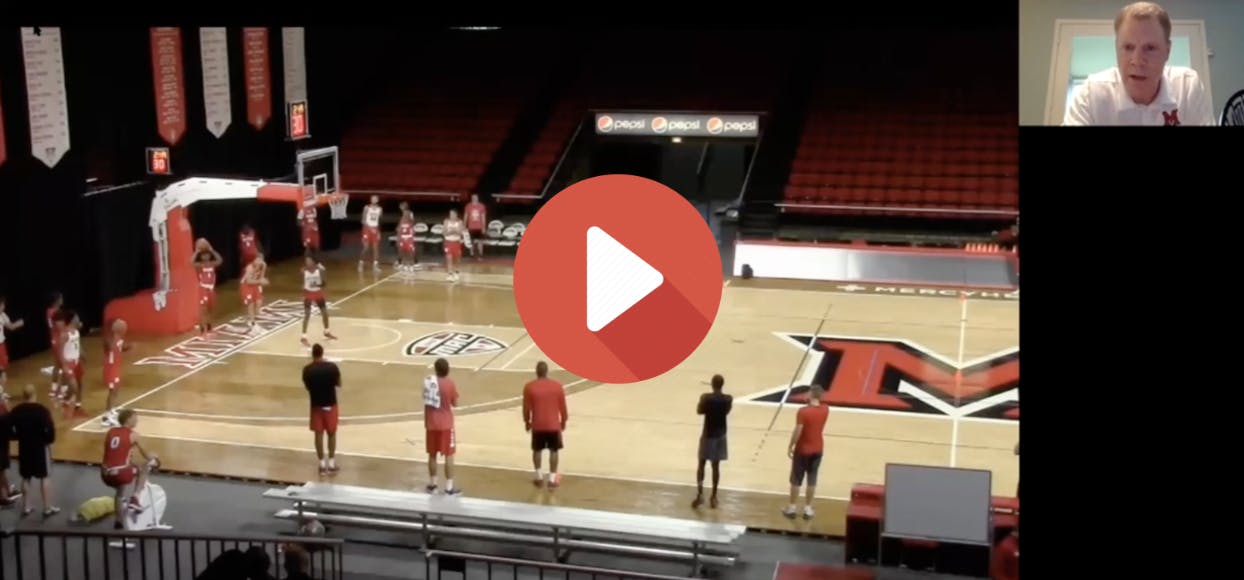
Jeff Rutter joined the Western Michigan men's basketball staff as an assistant coach in May of 2022.
Rutter arrived in Kalamazoo having spent the previous five seasons at Miami University. During his time in Oxford, he helped guide the RedHawks to 70 wins and an appearance in the 2018 CBI.
Coach Rutter’s ‘Up Tempo Offensive System’ course goes into detail about his Redhawk Drill, which begins with three lines of players along the baseline.
There will be a cone positioned at arc-extended along each sideline with three cones at half court. The right side line will start with the ball, and pass it to the middle line. When that pass is made, the player will sprint to the opposite side’s arc-extended cone.
The middle player will then pass it to the left sideline and sprint to the half-court cone in front of the arc-extended cone.
The third player catches the pass and passes it to the first player, who is now at the arc-extended cone and runs to the middle half-court cone. The drill then reverses and turns back around toward the basket.
This drill is fantastic in understanding where to look for outlets and passes up the court in transition, while also showing players proper cutting lanes when running the break.

